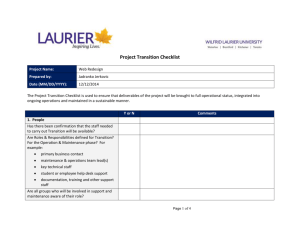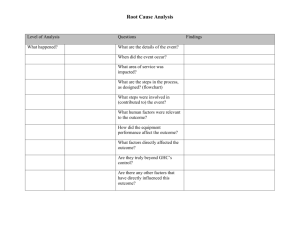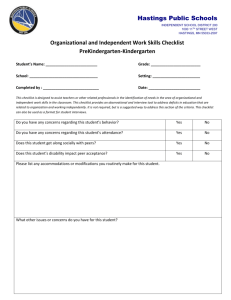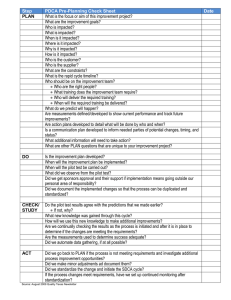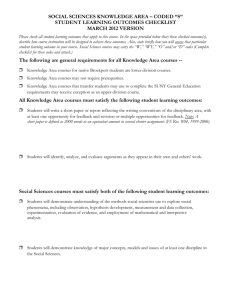Managing Change Checklist - Tarleton State University
advertisement
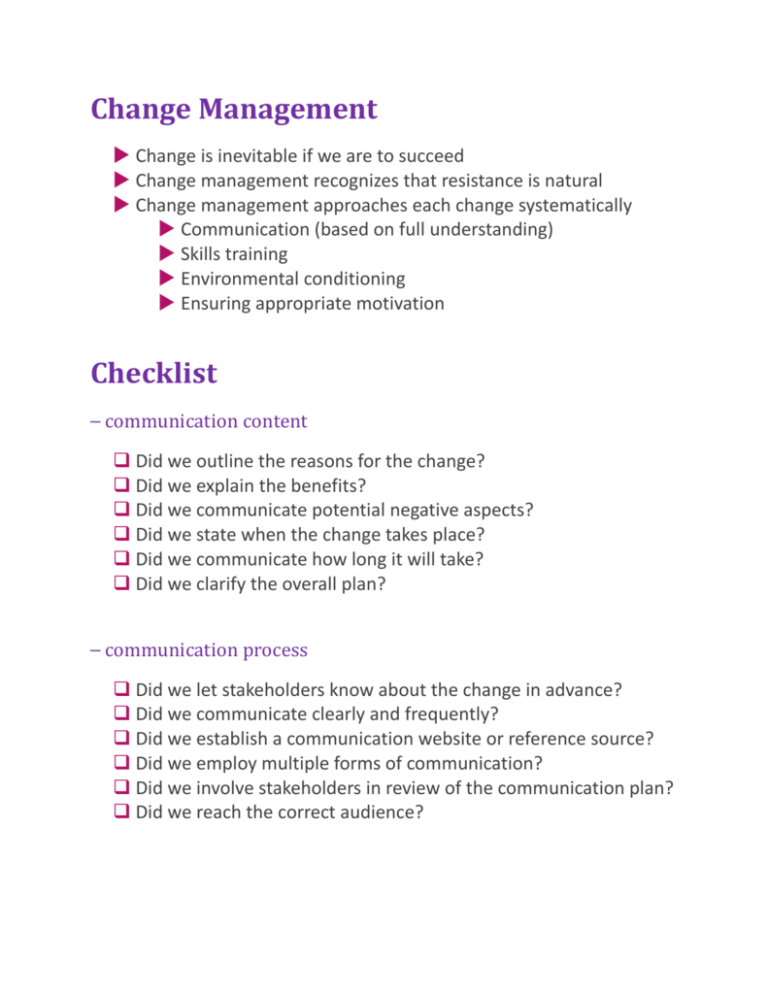
Change Management Change is inevitable if we are to succeed Change management recognizes that resistance is natural Change management approaches each change systematically Communication (based on full understanding) Skills training Environmental conditioning Ensuring appropriate motivation Checklist – communication content Did we outline the reasons for the change? Did we explain the benefits? Did we communicate potential negative aspects? Did we state when the change takes place? Did we communicate how long it will take? Did we clarify the overall plan? – communication process Did we let stakeholders know about the change in advance? Did we communicate clearly and frequently? Did we establish a communication website or reference source? Did we employ multiple forms of communication? Did we involve stakeholders in review of the communication plan? Did we reach the correct audience? Change Management Checklist (continued) – skills Did we establish who will be impacted? Did we explain impact appropriately? Did we provide training to those affected? Did we consider unintended consequences? Did we follow up with those impacted to ensure all issues were addressed? – environment Is executive sponsorship established? Is change appropriately prioritized? Is the change resourced as required? Staff (including backfilling) Funds Other (consultants) Is the organization willing to give up a lower priority to accomplish this one? Did we plan for contingencies? – motivation Did we develop a lessons learned from previous change efforts? Did we get feedback during the project and after? Did we provide recognition for those who made a difference? Did we celebrate success as a team? - Finance and Administration Division, Tarleton State University

